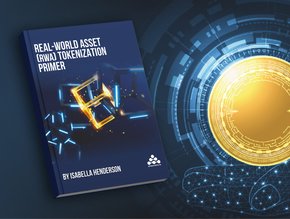At your service: Data-as-a-service in the financial world

Data-as-a-service is key to banks’ digital transformation. But how can they make the most of this dynamic approach to data management?
Data-as-a-service (DaaS), the practice of sourcing and analysing data on demand rather than completing full and formal data transformation, has reinvented the way institutions handle their data management capabilities. Institutions have been granted the ability to manage their data in an ad hoc yet fully accessible way, enabling them to drill down to the most relevant data needed for a specific task.
But what hurdles must incumbent banks overcome to ensure efficient data-as-a-service functionality? And what new methods are emerging in terms of managing and using data in financial services?
Implementing DaaS
Incumbents often face the issue of their data tending to be unorganised and/or inaccessible. Related datasets are not linked, meaning few useful insights can be drawn from them. What’s more, the sheer volume of the data stored by institutions could mean processing it becomes too time-expensive an activity when weighed against any derivable insights.
DaaS provides some solutions to these problems. Chiefly, it enables the simplification of data outputs, generating coherent datasets in which any present trends can be identified. It can also reduce the time taken to process data which, for many incumbent institutions and their vast data reserves, could otherwise take years.
DaaS can also be useful in uniting datasets in an easily understandable way, working in tandem with data visualisation tools. This not only enables dataset comparison but also ensures the compatibility of data between systems.
Targeting the right data
In a sector where the level of data processed on a daily basis is so vast, it is pivotal that institutions are able to derive the most useful insights from any data produced. This year, the amount of data processed by institutions was expected to increase by up to 200%. DaaS, then, provides a platform to easily access and leverage this data. But is it enough?
Many DaaS platforms promise streamlined data access and management, reducing the need for thoroughly planned extraction and analysis projects. Yet this mindset may encourage institutions to cut corners, instead handing responsibility for data management over to their DaaS partner (i.e. a third-party who builds and sometimes runs their DaaS platform). It is therefore key that institutions do not see DaaS as a means to absolve themselves of the responsibility of continuously improving their internal data stores. Instead, it should be seen as a potentially powerful tool providing strong and previously unattainable insights, with the onus being on the DaaS partner to give institutions suitable visibility and training of the platform to enable autonomous use beyond the timescale of the project itself.
Scaling on up…
DaaS offers a dynamic solution to dealing with high volumes of complex data. Institutions can use it to scale up and down their data access when necessary, producing cost and resourcing benefits.
Scalability also suits the current nature of institutions and how they are developing to meet the challenges of modern finance. The emergence of FinTechs has meant scalable solutions are integral for servicing the needs of these ever-growing institutions at any time.
Yet the same goes for incumbents. Institutions just beginning their digital transformation may only require limited data management at first, yet as these operations grow and new avenues of opportunity are explored, so too will their data management needs. While the rigidity of internal data warehouses would constrain their ability to expand, DaaS gives institutions the required flexibility to keep on top of increasing data demands.
Future struggles
Digital is the here and now when it comes to managing data in financial services, but that doesn’t excuse stasis in these areas. In 2017, a Gartner Hype Cycle of new technologies in financial services predicted that adoption of DaaS was still at an early stage, with peak adoption occurring in or around 2027.
As financial institutions become more digital-savvy, the opportunities opened up by DaaS and other ‘as-a-services’ will be more keenly felt. Rather than adopting cumbersome data management processes, institutions will likely prefer to approach data on an ad hoc basis. Some fintechs are already doing this, including a UK-based challenger bank which manages its over 800 dashboards and 100,000 SQL queries using flexible and dynamic analytics platforms based on a hybrid cloud environment.
Data-as-a-service enables access to the right data services at the right time, reducing costs and the time spent managing data. But institutions themselves must be responsible for identifying the potential rewards that can be reaped from DaaS and ensure that data harmonisation takes place. Used correctly, DaaS can be a powerful tool in banks’ digital transformation efforts.
To learn more about Critical’s work in restructuring banking ecosystems, check out our case study on the subject here.






